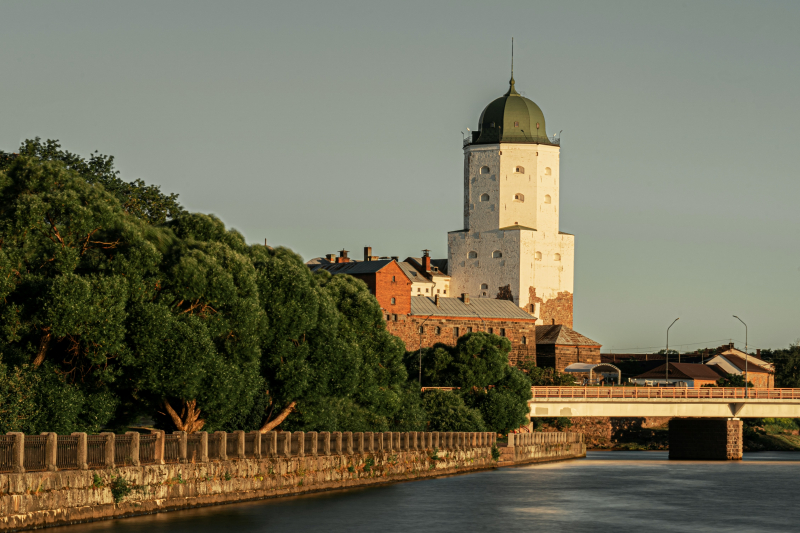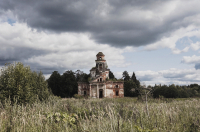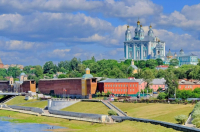St. Michael's Castle (St. Petersburg)
Castles are actually closer than you think, and one of the examples is St. Michael’s Castle, found right in the historical center of St. Petersburg. Known as the Mikhailovsky Castle or the Engineers' Castle, it is both a beautiful and unusual architectural phenomenon, blending features of a royal palace with those of a medieval lord’s castle.
It is also one of the most mysterious places in St. Petersburg, which will make all lovers of legends faint with excitement! The castle witnessed the dramatic end of Paul I of Russia, son of Catherine the Great, who was assassinated in his own bedchamber by furious civil and military officials. One of the legends says that his ghost still wanders the castle at midnight.
In its days as a military engineering academy – thus the name Engineers’ Castle – the palace had its share of famous students, including writers Fyodor Dostoyevsky and Dmitry Grigorovich, the scientist Ivan Sechenov, and the composer César Cui.
Today the building hosts a branch of the State Russian Museum, and you’ll have no trouble visiting its permanent portrait exhibition and open sculpture storerooms to contemplate Russian avant-garde and contemporary works, among others.
Vyborg Castle (Vyborg)
Rising stoutly from an islet in Vyborg Bay, this castle was built by the Swedes in 1293. Today, it is an authentic medieval castle regularly raided by dozens of tourists and historical reenactors to recreate medieval battles and the like.
In the very heart of the Vyborg Castle is the tower of St. Olav (in honor of the Baptist King of Scandinavia), a symbol and an architectural landmark of the city. After climbing up “300 steps to heaven” (that’s what the signs say), you’ll be guaranteed some spectacular views of the city from the castle’s one remaining tower.
If you’re in St. Petersburg, simply hop on a train to Vyborg to try your hand at various crafts, visit a knights’ chamber with handmade attires or a medieval torture chamber, and if you’re lucky, encounter the castle’s very own cats, including the one and only Sir Filimon.

Credit: alexey turenkov (@2renkov) via Unsplash
The Swallow's Nest (Crimea)
Perched on the edge of a cliff above the Black Sea, the Crimea’s most famous symbol is not technically a castle. Built by a German nobleman in 1912, it was created for show rather than for practical purposes. Originally a wooden cottage romantically named the Castle of Love, it was later on replaced with a Neo-Gothic manor that still stands to this day.
This fairytale place offers its visitors majestic views and all kinds of cultural events, including archaeological, artistic, and other exhibitions.
Waldau Castle (Kaliningrad)
Few of the castles of the Teutonic Order have survived till the present time, one of them being the Waldau Castle in the Kaliningrad Oblast. Never intended to hold out against long and often disastrous sieges or repel furious and imprudent attacks, it had always served as a shelter for traveling knights, clergymen, and soldiers. Later, it became a summer residence for the Grand Master of the Teutonic Order.
Despite its old age (dating back to 1258), the Waldau Castle attracts numerous visitors: parts of the former castle’s outbuildings still remain today and have been turned into a museum.
Garibaldi Castle (Samara Oblast)
And as a bonus, visit a place like no other and experience a true adventure at the Garibaldi Castle in the Samara Oblast. Nestled in the small town of Khryashchevka, this Gothic Revival-style castle was built to help its guests immerse themselves into medieval fantasies. The tourist complex includes a luxury hotel, numerous restaurants, beautifully manicured parks and gardens, entertainment areas, and even a port for long trips on the River Volga. You're definitely going to want to put this spot on your travel wishlist.
Russia is home to some of the most beautiful natural and architectural wonders in the world. Discover the magnificent variety that Russia has in store and get closer to understanding the delicate Russian soul with our Life in Russia series.




